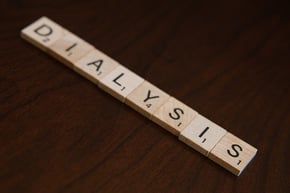Among all the protein staining techniques available today, most researchers around the world prefer using Coomassie dyes (also known as Coomassie brilliant blue) in visualizing electrophoresed proteins. There are a number of good reasons why they do. Here are some of them:
The Protein Man

Recent Posts
Coomassie, Enhanced Coomassie, and Colloidal Coomassie: What’s the Difference?
Topics: Protein Electrophoresis, Protein Detection
How to Choose between G250 or R250 Coomassie Dyes
 Proteins separated by gel electrophoresis can be visualized using different staining procedures, including Coomassie stains, silver stains and fluorescent stains. Among these staining techniques, silver staining undoubtedly offers the highest sensitivity. However, it also involves a complex and relatively time-consuming protocol, has a low linear dynamic range and reproducibility, and is not compatible with mass spectrometry.
Proteins separated by gel electrophoresis can be visualized using different staining procedures, including Coomassie stains, silver stains and fluorescent stains. Among these staining techniques, silver staining undoubtedly offers the highest sensitivity. However, it also involves a complex and relatively time-consuming protocol, has a low linear dynamic range and reproducibility, and is not compatible with mass spectrometry.
Topics: Protein Electrophoresis, Protein Detection
 There are certain things that you should not do when performing dialysis in the laboratory. To ensure that all unwanted small molecular weight substances (such as reducing agents, non-reacted crosslinking or labeling reagents, and preservatives) are removed and facilitate a more efficient buffer exchange for macromolecular samples such as proteins, here are some of the things you need to avoid at all cost.
There are certain things that you should not do when performing dialysis in the laboratory. To ensure that all unwanted small molecular weight substances (such as reducing agents, non-reacted crosslinking or labeling reagents, and preservatives) are removed and facilitate a more efficient buffer exchange for macromolecular samples such as proteins, here are some of the things you need to avoid at all cost.
Topics: Sample Clean Up
 lSodium dodecyl sulphate-polyacrylamide gel electrophoresis or SDS-PAGE is commonly used in protein aboratories for separating proteins based on their molecular weights. This is accomplished by taking advantage of their differential rates of migration through a sieving matrix (the acrylamide or agarose gel) in response to an applied electrical field.
lSodium dodecyl sulphate-polyacrylamide gel electrophoresis or SDS-PAGE is commonly used in protein aboratories for separating proteins based on their molecular weights. This is accomplished by taking advantage of their differential rates of migration through a sieving matrix (the acrylamide or agarose gel) in response to an applied electrical field.
Topics: Protein Electrophoresis




